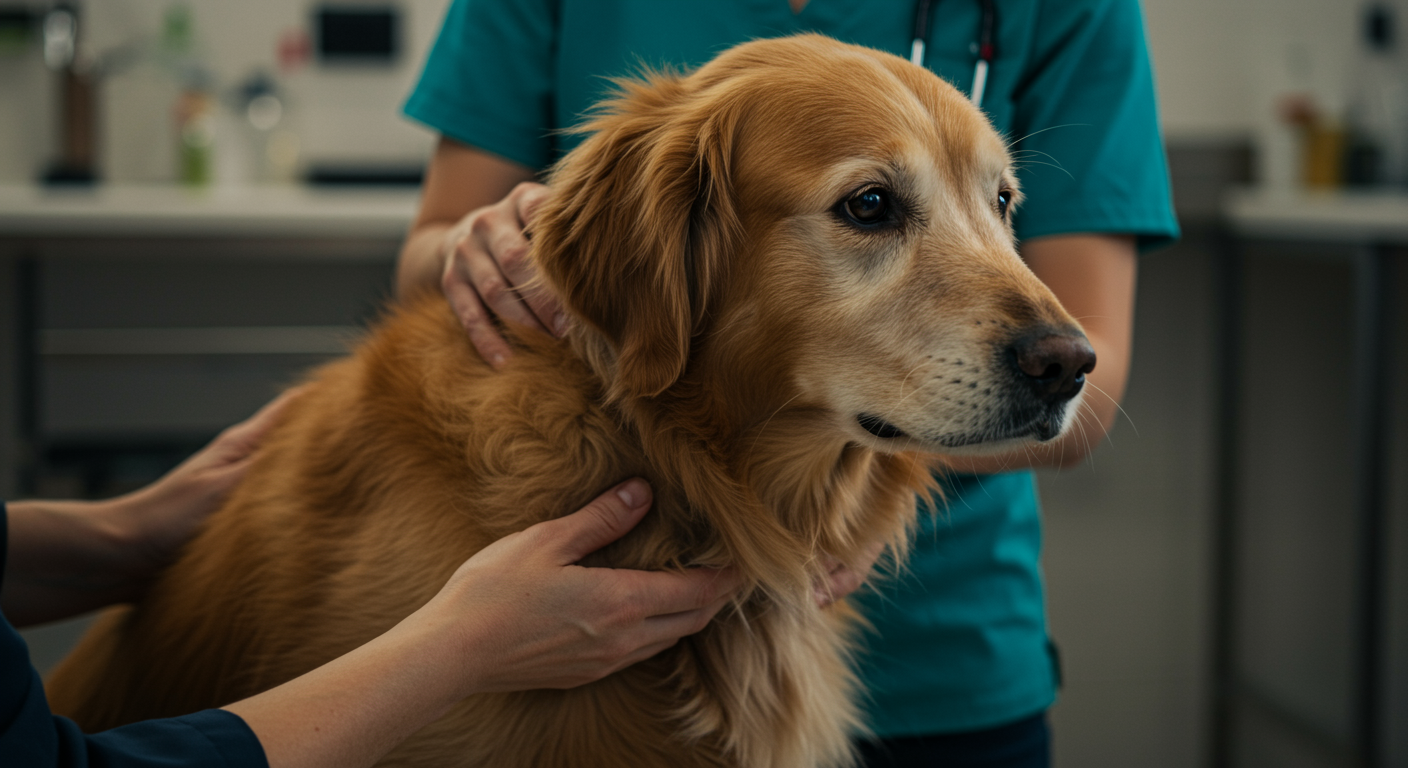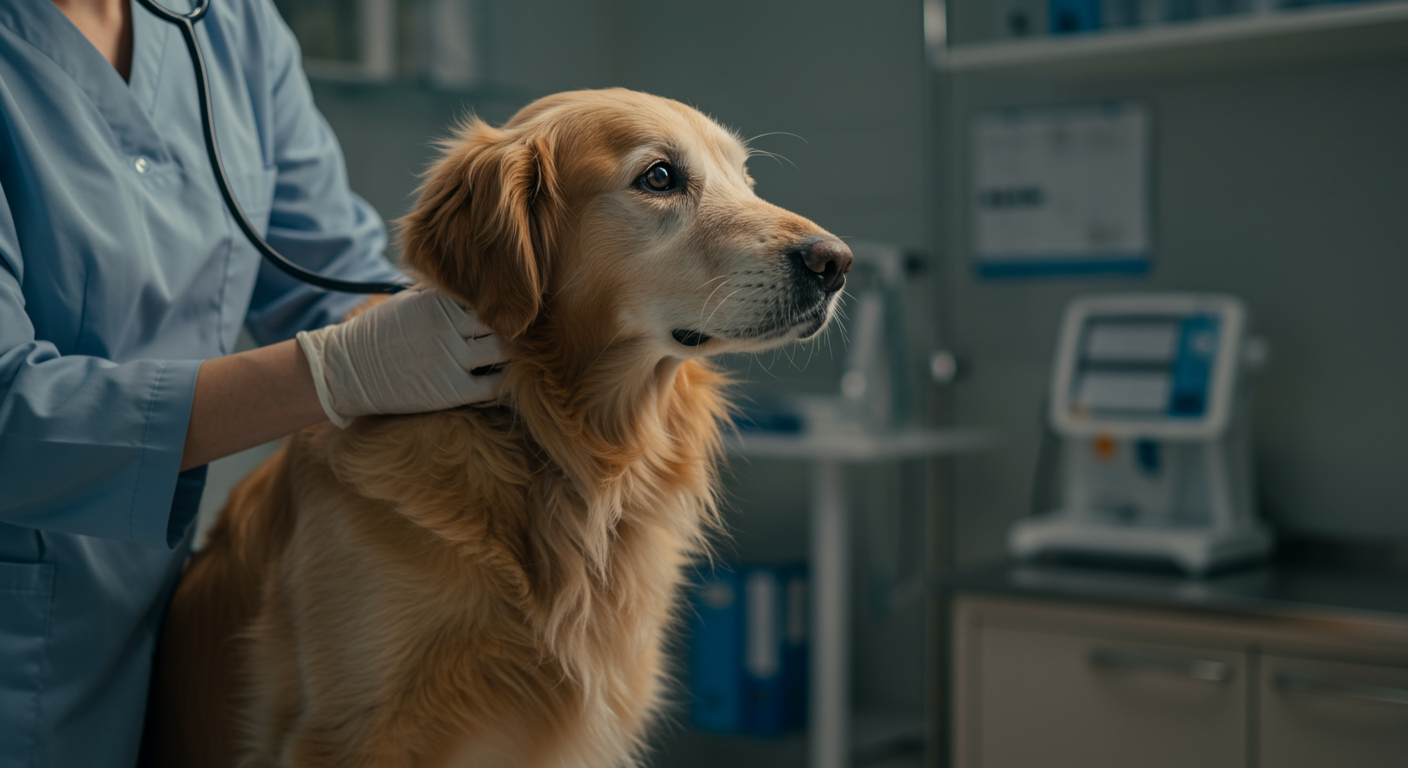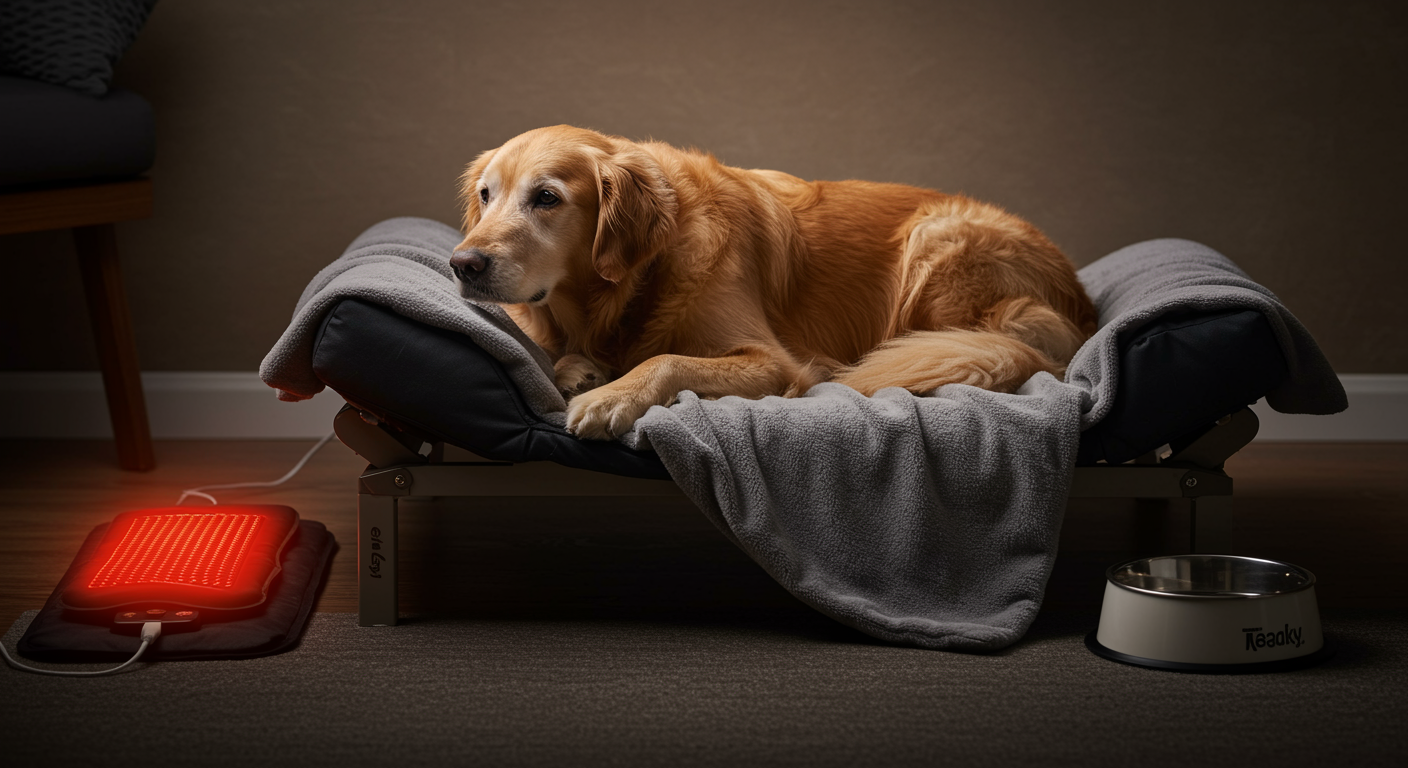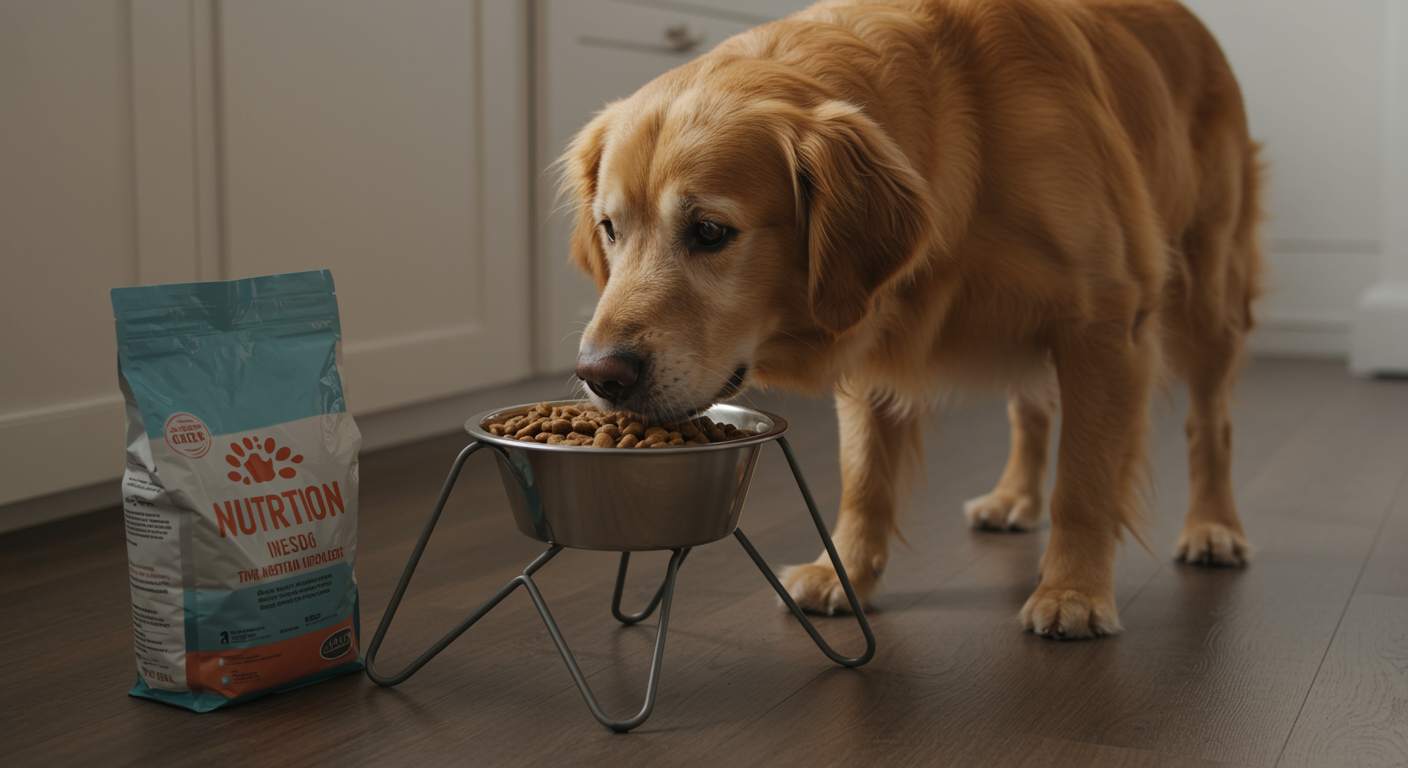Pain recognition in senior Golden Retrievers presents one of the most challenging yet critical aspects of geriatric canine care, as these stoic and gentle dogs often mask discomfort until it becomes severe. Unlike humans who can verbally communicate pain, dogs rely on subtle behavioral and physical changes to indicate their distress, making careful observation and understanding of pain signals essential for maintaining quality of life. Senior Golden Retrievers face increased risk of various painful conditions including arthritis, hip dysplasia, cancer, and other age-related ailments that require prompt recognition and management to preserve comfort and well-being.
The challenge of pain identification becomes even more complex in senior dogs because many owners mistakenly attribute changes in behavior or activity to “normal aging” rather than recognizing them as indicators of treatable pain conditions. Research indicates that pain significantly impacts quality of life, accelerates physical decline, and can contribute to behavioral changes that affect the human-animal bond. However, when pain is properly identified and managed, senior Golden Retrievers can maintain excellent quality of life and continue to enjoy their golden years with comfort and dignity.
Golden Retrievers’ inherent desire to please and their naturally stoic temperament often work against early pain recognition, as these dogs may continue attempting normal activities despite significant discomfort. Understanding the subtle ways Golden Retrievers communicate pain, learning to differentiate between normal aging changes and pain indicators, and knowing when to seek professional intervention can make the difference between ongoing suffering and effective pain management that preserves the joy and vitality these remarkable dogs bring to our lives.
Understanding Pain Physiology in Senior Golden Retrievers
Types of Pain Affecting Senior Dogs
Pain in senior Golden Retrievers can be categorized into several distinct types, each with unique characteristics and presentation patterns that require different recognition and management approaches.
Acute Pain: This type develops suddenly and is usually associated with specific injuries, surgical procedures, or sudden onset conditions. Acute pain often produces more obvious behavioral changes and is typically easier to recognize than chronic pain.
Chronic Pain: Long-lasting pain that persists for weeks, months, or years is common in senior Golden Retrievers with conditions like arthritis, hip dysplasia, or cancer. Chronic pain often develops gradually, making it harder to detect as dogs slowly adapt their behaviors to accommodate discomfort.
Inflammatory Pain: Caused by tissue inflammation from conditions like arthritis, injuries, or infections, this type of pain often responds well to anti-inflammatory treatments and may fluctuate in intensity based on activity levels and environmental factors.
Neuropathic Pain: Resulting from nerve damage or dysfunction, this type of pain can be particularly challenging to recognize and treat. It may manifest as hypersensitivity to touch, unusual movement patterns, or behavioral changes that seem disproportionate to visible problems.
Pain Perception and Response in Golden Retrievers
Breed-Specific Pain Tolerance: Golden Retrievers are known for their high pain tolerance and stoic nature, traits that were beneficial in their working dog heritage but can complicate pain recognition in domestic settings.
Age-Related Changes in Pain Perception: Senior dogs may experience changes in pain processing due to neurological aging, potentially making them more sensitive to some types of pain while becoming less responsive to others.
Individual Variations: Each Golden Retriever has unique pain expression patterns influenced by personality, previous experiences, health status, and environmental factors.
| Pain Type | Common Causes | Typical Duration | Recognition Difficulty | Management Approach |
|---|---|---|---|---|
| Acute Pain | Injuries, surgery, sudden illness | Hours to days | Low to Moderate | Immediate intervention |
| Chronic Pain | Arthritis, hip dysplasia, cancer | Weeks to years | High | Long-term management |
| Inflammatory Pain | Joint inflammation, tissue damage | Variable | Moderate | Anti-inflammatory treatment |
| Neuropathic Pain | Nerve damage, diabetes complications | Weeks to permanent | Very High | Specialized medications |
| Visceral Pain | Internal organ problems | Variable | Very High | Diagnostic imaging required |
Physical Signs of Pain
Postural and Movement Changes
Senior Golden Retrievers experiencing pain often develop characteristic changes in posture and movement patterns that careful observers can recognize.
Altered Stance: Dogs in pain may shift weight away from painful areas, resulting in asymmetrical standing positions. They might favor one leg, arch their back unusually, or hold their head and neck in abnormal positions.
Gait Modifications: Limping is an obvious sign, but subtler gait changes include shortened stride length, stiffness, reluctance to bear full weight on affected limbs, or compensatory movement patterns that place stress on other body parts.
Difficulty with Position Changes: Senior dogs with pain often struggle when rising from lying positions, sitting down, or changing positions. They may take longer to get comfortable or require multiple attempts to find pain-free positions.
Mobility Limitations: Previously easy activities like climbing stairs, jumping into cars, or navigating obstacles may become challenging or avoided entirely.
Physical Appearance Indicators
Muscle Changes: Chronic pain often leads to muscle atrophy in affected areas as dogs unconsciously reduce use of painful body parts. Conversely, some areas may show increased muscle tension or spasms.
Posture Abnormalities: Hunched backs, lowered heads, tucked tails, or other postural changes may indicate pain in specific body regions.
Facial Expressions: Dogs in pain may show subtle facial changes including squinting, furrowed brows, or tense facial muscles, though these signs can be difficult to recognize without careful observation.
Breathing Changes: Pain can affect breathing patterns, causing faster, shallower breathing, or reluctance to take deep breaths if movement causes discomfort.
Location-Specific Pain Signs
Joint Pain Indicators:
- Swelling or heat around joints
- Reluctance to extend or flex affected joints fully
- Stiffness after rest periods
- Decreased range of motion
Spinal Pain Signs:
- Reluctance to look up or down
- Difficulty with stairs or inclines
- Sensitivity to back touching
- Changes in tail carriage
Abdominal Pain Symptoms:
- Hunched posture
- Reluctance to lie down normally
- Sensitivity to abdominal touching
- Changes in appetite or bathroom habits
| Body Region | Common Pain Sources | Observable Signs | Behavioral Changes |
|---|---|---|---|
| Hips/Rear Legs | Arthritis, hip dysplasia | Bunny hopping, difficulty rising | Reluctance to climb stairs |
| Spine | Disc disease, arthritis | Arched back, stiff neck | Avoiding head movements |
| Shoulders/Front Legs | Elbow dysplasia, arthritis | Shortened stride, limping | Reluctance to play fetch |
| Abdomen | Organ disease, bloat | Hunched posture, guarding | Changes in appetite |
| Neck | Cervical disc disease | Head held low, stiffness | Difficulty eating from floor |
Behavioral Changes Indicating Pain
Activity Level Modifications
Pain often causes significant changes in activity patterns that may develop gradually and be mistaken for normal aging.
Decreased Exercise Tolerance: Dogs may show less enthusiasm for walks, require more frequent rest periods, or voluntarily end activities they previously enjoyed.
Reduced Play Behavior: Painful dogs often lose interest in games, toys, or interactive play that they once found engaging.
Sleep Pattern Changes: Pain can cause restlessness, difficulty finding comfortable sleeping positions, or frequent position changes during rest periods.
Withdrawal from Activities: Dogs may avoid activities that cause pain, such as climbing stairs, jumping, or playing with other dogs.
Social and Emotional Changes
Interaction Modifications: Painful dogs may become less social, avoiding interaction with family members or showing decreased enthusiasm for attention and petting.
Irritability or Aggression: Pain can cause normally gentle Golden Retrievers to become snappy, irritable, or show defensive aggression when touched in painful areas.
Anxiety or Depression: Chronic pain often leads to behavioral changes resembling anxiety or depression, including decreased appetite, reduced interest in surroundings, or increased clinginess.
Attention-Seeking Behaviors: Some dogs in pain may become more demanding of attention, possibly as a way of communicating distress or seeking comfort.
Appetite and Eating Changes
Decreased Food Interest: Pain, particularly in the mouth, neck, or abdomen, can reduce appetite or make eating uncomfortable.
Eating Position Changes: Dogs with neck or spinal pain may have difficulty eating from floor bowls and may benefit from elevated feeding stations.
Selective Eating: Some painful dogs may eat only favorite foods or require encouragement to maintain adequate nutrition.
Swallowing Difficulties: Neck pain or oral discomfort can make swallowing painful, leading to eating hesitation or food dropping.
Subtle Pain Indicators Often Missed
Early Warning Signs
Many pain indicators in Golden Retrievers are subtle and easily overlooked, especially in the early stages of painful conditions.
Micro-Expressions: Brief facial expressions of discomfort that last only seconds and may occur during movement or position changes.
Hesitation Behaviors: Slight pauses before jumping, climbing stairs, or engaging in activities that were previously automatic.
Preference Changes: Subtle shifts in preferred resting locations, such as choosing softer surfaces or avoiding previously favored spots.
Grooming Modifications: Changes in self-grooming patterns, either increased licking of painful areas or decreased grooming due to mobility limitations.
Temperature and Weather Sensitivity
Barometric Pressure Response: Many dogs with arthritis or joint pain show increased stiffness or discomfort before weather changes, becoming reliable “weather predictors.”
Cold Sensitivity: Arthritic dogs often show increased stiffness in cold weather and may seek warm places or show reluctance to go outside.
Heat Seeking: Dogs with joint pain may gravitate toward warm surfaces, heating vents, or sunny spots more than usual.
| Subtle Pain Sign | What to Look For | When It Occurs | Significance Level |
|---|---|---|---|
| Micro-hesitations | Brief pauses before movement | During transitions | Early indicator |
| Position Preferences | Avoiding hard surfaces | Rest periods | Moderate concern |
| Weather Sensitivity | Increased stiffness before storms | Seasonal/weather changes | Chronic pain indicator |
| Grooming Changes | Excessive licking of joints | Any time | Moderate to high concern |
| Sleep Restlessness | Frequent position changes | Nighttime | Chronic discomfort |
Age-Related vs. Pain-Related Changes
Distinguishing Normal Aging from Pain
One of the greatest challenges in senior dog care involves differentiating between normal age-related changes and pain-related modifications in behavior and mobility.
Normal Aging Changes:
- Gradual reduction in activity level
- Slightly longer warm-up periods after rest
- Mild decrease in jumping or climbing enthusiasm
- Some stiffness that improves with gentle movement
- Maintained appetite and social interest
Pain-Related Changes:
- Sudden or significant activity reduction
- Obvious difficulty or reluctance with movement
- Consistent avoidance of previously enjoyed activities
- Stiffness that doesn’t improve with movement
- Changes in appetite, mood, or social behavior
Assessment Timeline
Gradual Changes: Normal aging typically produces gradual changes over months or years, while pain-related changes may develop more rapidly or show sudden worsening.
Response to Rest: Age-related stiffness often improves with gentle movement, while pain-related limitations may persist or worsen with activity.
Consistency: Normal aging changes tend to be consistent day-to-day, while pain may fluctuate based on activity, weather, or other factors.
Pain Assessment Tools and Techniques
Home-Based Pain Evaluation
Daily Observation Logs: Keeping detailed records of activity levels, appetite, mood, and mobility can help identify patterns and changes that indicate pain.
Movement Assessment: Regularly observe your dog’s gait, posture, and movement patterns during various activities to establish baselines and detect changes.
Response Testing: Gentle manipulation of joints and muscles can help identify areas of sensitivity, though this should be done carefully to avoid causing additional discomfort.
Activity Monitoring: Track your dog’s willingness to engage in various activities and note any changes in enthusiasm or performance.
Professional Pain Assessment
Veterinary Examination: Comprehensive physical examinations by veterinarians trained in pain recognition can identify subtle signs that owners might miss.
Pain Scoring Systems: Veterinarians use standardized pain assessment scales that provide objective measures of pain levels and treatment effectiveness.
Diagnostic Imaging: X-rays, CT scans, or MRI can reveal underlying conditions causing pain that may not be apparent through physical examination alone.
Gait Analysis: Professional gait analysis can identify subtle lameness or movement abnormalities that indicate pain or dysfunction.
| Assessment Method | What It Measures | Frequency | Who Performs | Reliability |
|---|---|---|---|---|
| Daily Observation | Behavior, activity, appetite | Daily | Owner | Moderate (subjective) |
| Veterinary Exam | Physical signs, responses | Routine visits | Veterinarian | High |
| Pain Scales | Standardized pain measures | As needed | Veterinarian | High |
| Diagnostic Imaging | Structural abnormalities | When indicated | Veterinarian | Very High |
| Gait Analysis | Movement patterns | When indicated | Specialist | Very High |
Environmental and Situational Pain Triggers
Activity-Related Pain Patterns
Understanding when pain occurs in relation to specific activities helps identify its source and develop appropriate management strategies.
Exercise-Induced Pain: Pain that worsens with activity may indicate joint problems, while pain that improves with gentle movement might suggest stiffness rather than structural damage.
Rest-Related Stiffness: Stiffness and discomfort after periods of inactivity that improves with gentle movement is characteristic of arthritis.
Position-Dependent Pain: Pain that occurs only in certain positions may indicate specific structural problems that can be addressed through environmental modifications.
Weather-Related Changes: Increased pain or stiffness during cold, damp weather is common in dogs with arthritis and other inflammatory conditions.
Environmental Pain Factors
Surface Types: Hard surfaces may increase joint discomfort, while soft surfaces might be difficult for dogs with mobility issues to navigate.
Temperature Extremes: Cold can increase joint stiffness, while excessive heat may cause discomfort in dogs with certain conditions.
Elevation Changes: Stairs, ramps, and other elevation changes can trigger pain in dogs with joint or spinal problems.
Confined Spaces: Tight spaces that require awkward positioning may be painful for dogs with mobility limitations.
Communication and Documentation
Recording Pain Observations
Pain Diaries: Detailed logs recording daily pain observations, activity levels, medication responses, and environmental factors help track patterns and treatment effectiveness.
Video Documentation: Recording your dog’s movement patterns, especially during painful episodes, can provide valuable information for veterinary evaluation.
Photography: Pictures of posture, gait abnormalities, or swelling can help document pain-related changes over time.
Behavioral Notes: Detailed descriptions of behavioral changes, including timing, triggers, and responses to interventions.
Communicating with Veterinarians
Specific Descriptions: Use precise language to describe observed changes, including frequency, duration, and triggers.
Timeline Information: Provide clear timelines for when changes began and how they’ve progressed.
Response Documentation: Report how your dog responds to various interventions, medications, or environmental changes.
Quality of Life Impact: Describe how pain affects your dog’s daily activities, social interactions, and overall well-being.
Pain Management Strategies
Multi-Modal Pain Approaches
Medication Management: Various pain medications including NSAIDs, opioids, and adjunctive therapies can be combined for optimal pain control.
Physical Therapy: Rehabilitation exercises, massage, and other physical therapies can help manage pain while maintaining mobility.
Environmental Modifications: Changes to the home environment can reduce pain triggers and support comfort.
Alternative Therapies: Acupuncture, laser therapy, and other complementary treatments may provide additional pain relief.
Monitoring Treatment Effectiveness
Response Assessment: Regular evaluation of pain levels and functional improvement helps guide treatment adjustments.
Side Effect Monitoring: Watching for medication side effects ensures treatments remain beneficial rather than harmful.
Quality of Life Evaluation: Ongoing assessment of overall well-being helps determine whether pain management strategies are meeting goals.
Adjustment Protocols: Flexibility in treatment approaches allows for optimization based on individual responses and changing needs.
| Pain Management Approach | Primary Benefits | Typical Timeline | Monitoring Requirements |
|---|---|---|---|
| NSAIDs | Anti-inflammatory, pain relief | Days to weeks | Blood work monitoring |
| Physical Therapy | Mobility, strength, pain relief | Weeks to months | Progress assessment |
| Environmental Changes | Reduced pain triggers | Immediate to gradual | Behavioral observation |
| Alternative Therapies | Additional pain relief | Variable | Response monitoring |
| Weight Management | Reduced joint stress | Months | Regular weigh-ins |
Long-Term Pain Monitoring
Establishing Baselines
Functional Assessments: Document current mobility, activity levels, and behavioral patterns to establish baselines for future comparison.
Pain-Free Goals: Identify realistic goals for pain management based on individual circumstances and underlying conditions.
Quality of Life Metrics: Develop specific measures for evaluating whether pain management strategies are maintaining acceptable quality of life.
Adaptation Strategies
Changing Needs: Recognize that pain management needs may evolve as dogs age or as underlying conditions progress.
Treatment Adjustments: Be prepared to modify pain management approaches based on effectiveness, side effects, or changing circumstances.
End-of-Life Considerations: Understand when pain management goals may shift from cure-focused to comfort-focused care.
Recognizing the Language of Pain
Understanding and recognizing pain in senior Golden Retrievers represents one of the most important skills owners can develop to ensure their beloved companions’ comfort and quality of life throughout their golden years. The subtle nature of canine pain communication, combined with Golden Retrievers’ stoic temperament, makes careful observation and understanding of pain signals essential for providing compassionate care.
The investment in learning to recognize pain indicators pays immeasurable dividends in preserved comfort, maintained quality of life, and strengthened bonds with aging companions. When pain is properly identified and managed, senior Golden Retrievers can continue to experience joy, engagement, and the special connection that makes them such extraordinary companions.
Success in pain recognition lies not in waiting for obvious signs but in developing sensitivity to subtle changes that indicate discomfort before it becomes severe. The goal extends beyond simply identifying pain to encompass comprehensive pain management that preserves dignity, comfort, and the golden spirit that defines these remarkable dogs throughout their lives.
Your commitment to understanding and recognizing pain in your senior Golden Retriever demonstrates profound love and dedication to their well-being. Through careful observation, prompt recognition of pain signals, and proactive management strategies, you ensure that their golden years remain truly golden—filled with comfort, dignity, and the continued joy that comes from a life free from unnecessary suffering.

Rafael Souza is a digital marketing strategist and lifelong dog enthusiast. Passionate about Golden Retrievers, he shares practical, research-based tips to help owners provide healthier and happier lives for their furry companions.






3 thoughts on “Signs of Pain in Senior Golden Retrievers: Identification Guide”